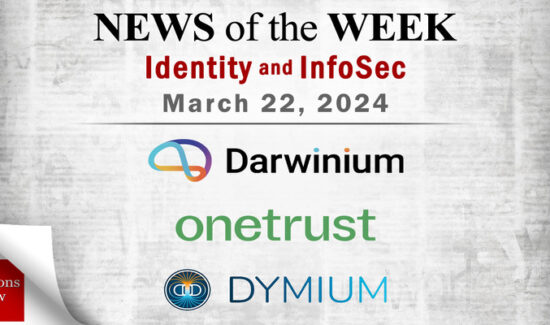What are Vulnerability Management Solutions? Why Do They Matter for SIEM?


Within the categories of SIEM and security analytics in general, solutions can become quite nuanced. How does security event correlation differ from big data analytics? How do SIEM and network security monitoring compare? What are vulnerability management solutions?
Actually, let’s explore that last question in depth. Vulnerability management solutions should become a critical part of your SIEM and cybersecurity foundations. Yet many enterprises fail to recognize its importance or deploy these solutions.
Widget not in any sidebars
Perhaps worse, enterprises don’t realize they need both vulnerability management and SIEM. Having just one or the other leaves them open to hackers in different ways.
We explain why by answering some of the most important question surrounding this InfoSec category:
What Are Vulnerability Management Solutions?
Fortunately, this proves a rather question to answer! Vulnerability management solutions offer enterprises the chance to discover and mitigate potential vulnerabilities on their networks.
To do so, vulnerability management solutions provide continuous discovery, reporting, prioritization, and response capabilities. In other words, vulnerability management scans for potential software vulnerabilities, alerts your IT team, and help them patch the problems.
Okay, What are Software Vulnerabilities?
While this must appear an incredibly surface-level question, it actually speaks to the myriad faces of risk your enterprise faces.
Indeed, one common maxim of cybersecurity springs to mind: you can’t defend against the unknown. Hence why so many SIEM solutions provide threat intelligence feeds.
Plus, software vulnerabilities are a diverse crowd. Just a few examples include:
- Memory safety vulnerabilities.
- Code injection.
- Input validation errors.
- Privilege confusion.
- Side-channel attacks.
- User interface failures.
Your enterprise could have any number of vulnerabilities lurking in its IT environment. Often, each department or network area has multiple vulnerabilities hiding just under the surface. They can arise from any number of activities, such as the integration of new technologies or solutions, a programming change in the environment, or even just day-to-day business practices.
What Should Vulnerability Management Solutions Do For Me?
The first key capability for any vulnerability management solution is discovery. As strange as this might sound, vulnerability management shouldn’t just find vulnerabilities. Instead, it needs to provide your enterprise with information on your network assets—all of them.
The other maxim of cybersecurity springs to mind now: you can’t protect what you can’t see. Only with discovery can you rest assured you have protections for all of your assets.
Moreover, the discovery process must be continuous. Your IT network doesn’t keep static for months at a time—it could change radically over the course of a day!
After discovery, vulnerability management solutions should provide your IT department with reports on its discoveries. Ideally, these reports should categorize and assess all of the assets and vulnerabilities it discovered. After all, raw technical data rarely helps anyone.
But perhaps the most important capability offered by vulnerability management is prioritization. Usually, your enterprise will discover multiple vulnerabilities on your network and may not know where to start. Using a predefined list of characteristics—which your team can adjust at any time—VM can rank the vulnerabilities in terms of severity.
Of course, this makes the most serious threats easy to identify. Thus your IT security team can begin the response process.
What Does Risk Response Entail?
Vulnerability Management actually lends itself to three different possible responses to discovered vulnerabilities: remediate, mitigate, or accept.
Let’s tackle them in reverse order. Sometimes, you can discover a vulnerability and realize you can’t solve it. Perhaps solving it could seriously damage your business processes. For example, the patch necessary could affect your data inputs or outputs. In these cases, closer security monitoring via SIEM helps bridge the gap.
Contrastly, security mitigation reduces the risk of vulnerabilities by taking a more indirect route to cybersecurity. If you discover a vulnerability in one of your web applications, you could choose to mitigate it via a firewall.
Finally, your IT security could choose to remediate the vulnerability by directing tackling it via a patch or a similar action.
Is Vulnerability Management the Same as Patch Management?
Not quite. Vulnerability management emphasizes discovering problems and patching them as discovered. Patch management more concerns itself with ensuring all systems receive their patches in a timely fashion.
The latter proves especially important in modern cybersecurity. Patches not only close vulnerabilities but they also contain threat intelligence necessary for staying up-to-date with hackers’ tactics.
However, vulnerability management offers discovery and tools other than patching for solving network problems. In short, your enterprise should invest in both.
Why Does This Matter to SIEM?
Think about the challenges to successful SIEM. SIEM needs constant management and continual maintenance, sure. However, it also needs careful deployment.
After all, SIEM can become overwhelming for IT security teams; if deployed all at once, SIEM can flood your IT team with data and security alerts. Additionally, it could create integration issues with other technologies, including other cybersecurity solutions.
In other words, SIEM needs pairing with prioritization. Thankfully, vulnerability management can provide this prioritization. It can identify all of the assets on your network, allowing you to pick the most important databases for SIEM protection.
Additionally, SIEM can help you monitor areas which vulnerability management can’t patch. Obviously, this use of cybersecurity solutions in tandem can close your digital perimeter and reinforce your cybersecurity policies.
Finally, most compliance and audit frameworks now require some form of vulnerability management. While not as critical as once was, SIEM still concerns itself with enterprise compliance fulfillment. You need vulnerability management to complete your compliance and SIEM to create the report.
Conclusion: Why You Need This Cybersecurity?
You can’t allow vulnerabilities to persist on your network. Every vulnerability lingering on your IT environment could allow hackers to slip in unchallenged.
As your enterprise scales, migrates to cloud environments, and adjusts to new demands, your digital perimeter becomes more porous. More vulnerabilities shall arise as new applications become part of your business processes. Don’t allow vulnerabilities to define your cybersecurity posture.
If you want to learn more about the interrelation of vulnerability management solutions and SIEM, check out our Buyer’s Guide or Vendor Map. We cover the top vendors in the market and their key capabilities!























